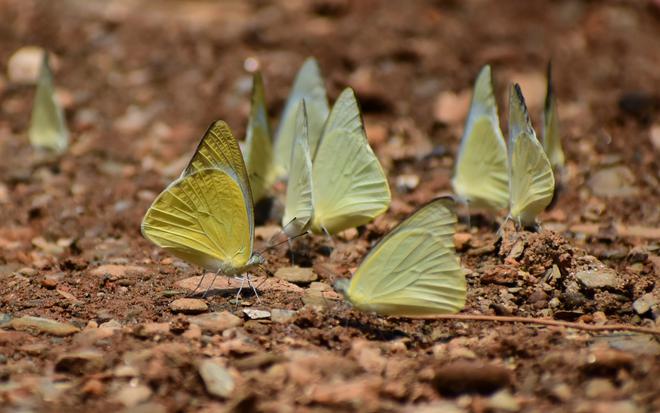Butterfly migration from the Eastern Ghats and plains towards the Western Ghats, an annual phenomenon coinciding with the onset of the Northeast monsoon, was below par this year.
Observers of The Nature and Butterfly Society (TNBS), who have been tracking butterfly migration since 2013, say that they could not see large scale movement of butterflies towards the west till date since September, possibly due to below normal rainfall in west zone districts.
The Eastern Ghats complex comprising the Yercaud hills (Shevaroy hills), Pachamalai, Kolli hills, Kalvarayan hills are the major originating places for the migration in Tamil Nadu. Before the onset of the Northeast monsoon, butterflies from the subfamily Danainae, such as Blue Tiger, Dark Blue Tiger, Double-branded Crow, and Common Crow (commonly known as ‘Tigers and Crows’), leave these hills and fly towards the west. But observers saw only a low scale migration of Tigers and Crows since September this year.
According to TNBS, Tamil Nadu had a rainfall of 92% of its normal level (June-September 2023), while the districts involved in the migratory movement in the west zone, especially Salem and Namakkal, had a deficit of 7% and 10%.
“Though this is termed normal, we see a good migratory movement when the rainfall is in excess. This could be one reason why we did not see much of Tigers and Crows moving enmasse towards Coimbatore, the Nilgiris and northwestern border of Erode district. Added to this is the deficit rain in Salem and Namakkal again during the Northeast monsoon by 27% and 9% respectively,” said senior TNBS member A. Pavendhan.

Many of the regular routes, over which the migration is usually observed, did not see any movement this year.
“Out of the 15-odd regular migratory routes in Coimbatore district, only a few witnessed movement. Butterfly congregations were observed at a few places, namely Ponnuthu hills, Kallar and Anaikatti,” said Ramanasaran H. from TNBS.
Gopalakrishnan S., a TNBS member from Tiruppur, said he could record only one migratory movement from September this year.
“While many factors influence butterfly migration, changes in the climatic conditions are assessed to play a major role. Observers believe there is a strong correlation between rain and migration movement. We are collecting more data on the phenomenon and now this is a hypothesis on paper. TNBS has shared the data with ‘Butterfly Migration India’, a portal where information from all states are collated for deeper understanding,” said Mr. Pavendhan.
Local movement of Albatross
Meanwhile, observers noticed local movement of Common Albatross (Appias albina), a butterfly species from the family Pieridae, in large numbers from the low to mid-elevation of hills of Anaikatti and the Nilgiris towards Sirumugai forest range and Sathyamangalam Tiger Reserve during the second week of November.







